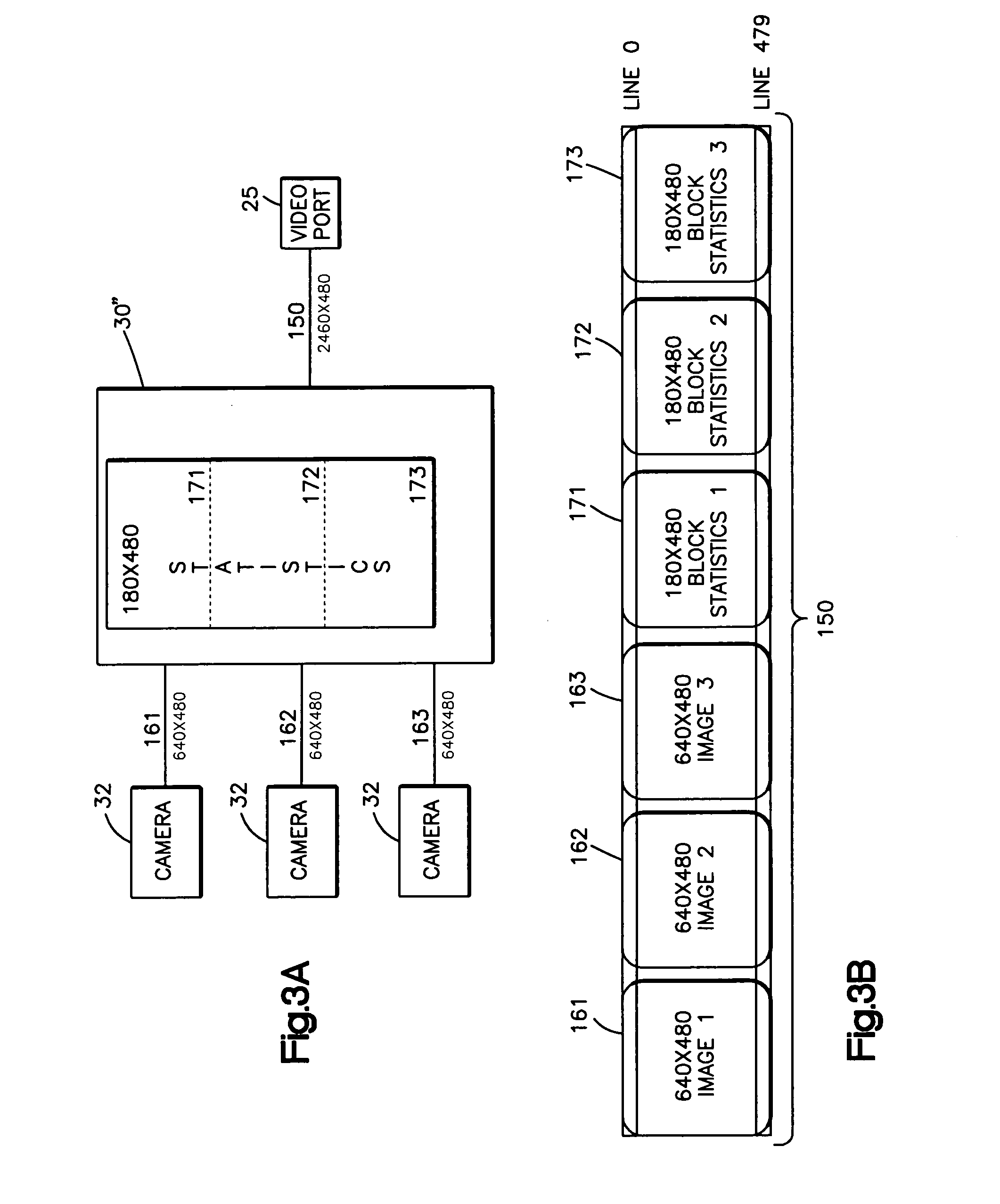Processing image data from multiple sources
a processing of image data and multiple sources, applied in the field of image data processing of target images, can solve the problems of inability to use an inexpensive microprocessor, high overhead involved in switching between the different data destinations, and inability to meet the requirements of high-speed data processing, so as to reduce the overhead required
- Summary
- Abstract
- Description
- Claims
- Application Information
AI Technical Summary
Benefits of technology
Problems solved by technology
Method used
Image
Examples
Embodiment Construction
[0017] Referring to FIG. 1, a block diagram 10 of various electric circuits and circuit boards that can be employed as part of an imaging system to interleave multiple streams of data into a single video stream is shown. A microprocessor or CPU 20 receives digital signals from an FPGA circuit 30. The FPGA acquires image data from one or more sensor circuits, such as those in cameras 32 and computes statistical data about the image data. As will be described, the FPGA provides an augmented version of the image data that includes the statistical data through a video port 25 to the CPU 20. The FPGA also provides necessary timing signals to the video port. The CPU may also communicate by data line to Flash memory 22 and DRAM memory 23 on which data and software for the system are stored. This information may include decoded data from a target optical code. The CPU transmits information to external components via interface circuits 35. One example of information that may be transmitted i...
PUM
 Login to View More
Login to View More Abstract
Description
Claims
Application Information
 Login to View More
Login to View More - R&D
- Intellectual Property
- Life Sciences
- Materials
- Tech Scout
- Unparalleled Data Quality
- Higher Quality Content
- 60% Fewer Hallucinations
Browse by: Latest US Patents, China's latest patents, Technical Efficacy Thesaurus, Application Domain, Technology Topic, Popular Technical Reports.
© 2025 PatSnap. All rights reserved.Legal|Privacy policy|Modern Slavery Act Transparency Statement|Sitemap|About US| Contact US: help@patsnap.com



